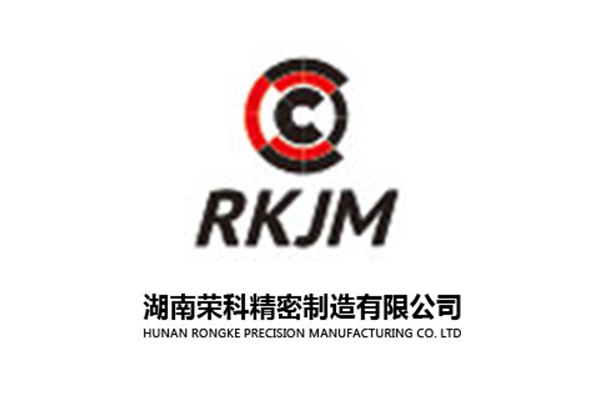Media Information
MEDIA INFORMATION
People-oriented integrity first, development and innovation, cooperation and win-win
Analysis of Influencing Factors of Mold Deformation and Solutions
Category: Industry News
2024-02-02
The general law of heat treatment deformation is not discussed here, and the following is a brief analysis of some factors affecting mold deformation.
One. Influence of Die Material on Heat Treatment Deformation
The influence of material on heat treatment deformation, including the chemical composition of steel and the original tissue. From the point of view of the material itself, the heat treatment deformation is mainly affected by the influence of the composition on the hardenability, Ms point, etc.
Carbon tool steel in the normal quenching temperature of water-oil double liquid quenching, in the Ms point above the great thermal stress, when cold to the Ms point below, austenite to martensite transformation, resulting in tissue stress, but because of carbon tool steel hardenability is poor, so the value of tissue stress is not large. In addition, its Ms point is not high, in the occurrence of martensitic transformation, the plasticity of steel has been very poor, not easy to plastic deformation, therefore, it retains the deformation characteristics caused by thermal stress, mold cavity tends to shrink. However, if the quenching temperature is increased (>850 ℃), the cavity tends to swell due to the leading role of tissue stress.
When using 9Mn2V,9SiCr,CrWMn,GCr15 steel and other low alloy tool steels to make molds, the quenching deformation law is similar to that of carbon tool steel, but the deformation is smaller than that of carbon tool steel.
For some high alloy steel, such as Cr12MoV steel, due to its high carbon and alloy element content and low Ms point, there is more residual austenite after quenching, which can offset the volume expansion caused by martensite. Therefore, the deformation after quenching is quite small. Generally, when air cooling, air cooling and nitrate bath quenching are used, the mold cavity tends to swell slightly. If the quenching temperature is too high, the amount of residual austenite increases and the cavity may also shrink.
If the mold is made of carbon structural steel (such as 45 steel) or some alloy structural steel (such as 40Cr), because of its high Ms point, when the surface starts martensitic transformation, the core temperature is still high, the yield strength is low, and there is a certain plasticity. The instantaneous tensile tissue stress of the surface to the core is easy to exceed the yield strength of the core and make the cavity tend to swell.
The original microstructure of steel also has a certain effect on quenching deformation. The "original tissue of steel" referred to here includes the level of inclusions in steel, the level of banded tissue, the degree of segregation of components, the directionality of free carbide distribution, etc., as well as different tissues obtained due to different pre-heat treatments (e. g., pearlite, tempered sothos, tempered drothos, etc.). For die steel, the main consideration is the shape and distribution of carbide segregation, carbide.
The effect of carbide segregation in high carbon high alloy steel (such as Cr12 steel) on quenching deformation is particularly obvious. Since carbide segregation causes inhomogeneity in the composition of the steel after heating to the austenitic state, the Ms points in different regions will be high and low. Under the same cooling conditions, the transformation of austenite to martensite occurs first and then, and the specific volume of the transformed martensite is large and small due to the different carbon content. Even some low-carbon and low-alloy regions may not get martensite at all (bainite, troostite, etc.), all of which will cause uneven deformation of parts after quenching.
Different carbide distribution forms (granular or fibrous distribution) have different effects on the expansion and contraction of the matrix, thus also affecting the deformation after heat treatment. Generally, the cavity expands along the carbide fiber direction and is more significant. However, the direction perpendicular to the fiber is reduced, but not significant. Some factories have specially stipulated that the surface of the cavity should be perpendicular to the direction of the carbide fiber to reduce the deformation of the cavity, when the carbide is uniformly distributed in the form of particles, the cavity shows uniform expansion and contraction.
In addition, the state of the tissue before the final heat treatment also has a certain effect on deformation, for example, the original tissue is spherical pearlite than the flaky pearlite after quenching the tendency to deform less. Therefore, the deformation of the mold, often after the first rough processing of a quenching and tempering treatment, and then finish processing and final heat treatment.
II. Influence of die geometry on deformation
The effect of mold geometry on heat treatment deformation is actually still through thermal stress and tissue stress. Because the shape of the mold is varied, it is still very difficult to summarize the exact deformation law.
For symmetrical molds, the deformation tendency of the cavity can be considered according to the cavity size, external dimensions and height. When the mold wall is thin and the height is small, it is easier to harden through. At this time, it is possible that the tissue stress plays a leading role. Therefore, the cavity often tends to swell. On the other hand, the wall thickness and height are large, and it is not easy to harden. At this time, the thermal stress may play a leading role. Therefore, the cavity often tends to shrink. What is said here is the general trend. In the production practice, it is also necessary to consider the specific shape of the part, the steel grade and the heat treatment process used, and constantly sum up the experience through practice. Since in actual production, the external dimensions of the mold are often not the main working dimensions, and can be corrected by grinding after deformation, the above analysis is mainly the deformation trend of the cavity.
For the deformation of the asymmetric mold, it is also the result of the combined effect of thermal stress and tissue stress. For example, the thin-walled thin edge of the mold, due to the thin mold wall, quenching when the temperature difference between inside and outside is small, so the thermal stress is small; but easy quenching, tissue stress is larger, so the deformation tends to cavity swell.
In order to reduce the deformation of the mold, the heat treatment department should work with the mold design department to study and improve the mold design, such as avoiding the mold structure with different cross-sectional sizes as much as possible, trying to make the mold shape symmetrical, and using the split structure for complex molds.
When the shape of the mold cannot be changed, some other measures can be taken in order to reduce the deformation. The overall consideration of these measures is to improve the cooling conditions, so that all parts can be evenly cooled; in addition, it can also be assisted by various coercive measures to limit the quenching deformation of parts. For example, increasing the process hole is a measure to make each part evenly cooled, that is, to open holes in some parts of the mold, so that all parts of the mold can be evenly cooled to reduce deformation. Can also be easy to swell after quenching the outer periphery of the mold with asbestos wrapped to increase the inner hole and the outer layer of the cooling difference, so that the cavity shrinkage. Leaving ribs or reinforcement on the mold is another compulsory measure to reduce deformation. It is especially suitable for concave molds with large cavities and molds with large notches that are easy to swell or shrink.
Three. Effect of Heat Treatment Process on Mold Deformation
1. Effect of heating speed
Generally speaking, when quenching heating, the faster the heating speed, the greater the thermal stress generated in the mold, which is easy to cause deformation and cracking of the mold, especially for alloy steel and high alloy steel, because of its poor thermal conductivity, it is especially necessary to pay attention to preheating. For some high alloy molds with complex shapes, it is necessary to take multiple grading preheating. However, in individual cases, rapid heating can sometimes reduce deformation. At this time, only the surface of the mold is heated, while the center is still "cold", so the tissue stress and thermal stress are correspondingly reduced, and the deformation resistance of the heart is relatively large, thus reducing quenching deformation. According to some factory experience, it has certain effect on solving hole distance deformation.
2. Effect of heating temperature
The quenching heating temperature affects the hardenability of the material, and also plays a role in the composition and grain size of the austenite.
(1) From the perspective of hardenability, high heating temperature will increase the thermal stress, but at the same time increase the hardenability, so the tissue stress also increases and gradually dominates. For example: carbon tool steel T8, T10, T12, etc., when quenching at the general quenching temperature, the inner diameter shows a tendency to shrink, but if the quenching temperature is increased to ≥ 850 ℃, the structure stress gradually dominates due to the increase of hardenability, so the inner diameter may show a tendency to expand.
(2) From the perspective of austenite composition, the increase of quenching temperature increases the carbon content of austenite, and the positive degree of martensite after quenching increases (specific volume increases), thus increasing the volume after quenching.
(3) from the Ms point of view, the quenching temperature is high, the austenite grain is coarse, will make the parts of the deformation cracking tendency increases.
Summarizing the above, for all steels, especially some high carbon medium and high alloy steels, the quenching temperature will obviously affect the quenching deformation of the mold. Therefore, it is very important to correctly select the quenching heating temperature.
In general, the choice of high quenching heating temperature is not good for deformation. Without affecting the performance of the premise, always use a lower heating temperature. However, for some steel grades with more residual austenite after quenching (such as Cr12MoV, etc.), the amount of residual austenite can also be changed by adjusting the heating temperature to adjust the deformation of the mold.
3. Effect of quenching cooling rate
In general, increasing the cooling rate above the Ms point will significantly increase the thermal stress, resulting in an increase in the deformation caused by thermal stress; increasing the cooling rate below the Ms point will mainly increase the deformation caused by the tissue stress.
For different steel grades, due to the difference of Ms point, there are different deformation trends when using the same quenching medium. If different quenching media are used for the same steel, they also have different deformation trends due to their different cooling capacities. For example, the Ms point of carbon tool steel is relatively low, so when water cooling is used, the influence of thermal stress tends to prevail; and when cold is used, it may be that the tissue stress prevails.
In actual production, the mold is often graded or graded-isothermal quenching, usually are not completely hardened, so often to the role of thermal stress, so that the cavity tends to shrink, but because the thermal stress is not very large, therefore, the total deformation is relatively small. If the use of water-oil double liquid quenching or oil quenching, the thermal stress caused by the larger, the cavity shrinkage will increase.
4. Effect of tempering temperature
The effect of tempering temperature on deformation is mainly caused by the transformation of the structure during tempering. If the "secondary quenching" phenomenon occurs in the tempering process, the residual austenite is transformed into martensite, and the specific volume of the generated martensite is larger than that of the residual austenite, which will cause the die cavity to swell. For some high alloy tool steels such as Cr12MoV steel, when high temperature quenching is mainly used to require red hardness and tempering for many times, the volume will swell once per fire. If tempered in other temperature regions, the specific volume decreases due to the transformation of quenched martensite to tempered martensite (or tempered sorbite, tempered troostite, etc.), and thus the cavity tends to shrink.
In addition, when tempering, the residual stress in the mold is relaxed, and the deformation is also affected. After the die is quenched, if the surface is in a tensile stress state, the size will increase after tempering; on the contrary, if the surface is in a compressive stress state, shrinkage will occur. However, the former is the main cause of the two effects of organizational transformation and stress relaxation.
RELATED INFORMATION
How to effectively improve the accuracy of mold processing
With the rapid development of China's economic construction and the improvement of people's living standards, China's construction industry is developing rapidly, and the demand for aluminum profiles is increasing. Therefore, the demand for aluminum alloy extrusion die design, manufacturing and production is also increasing.
View Details




